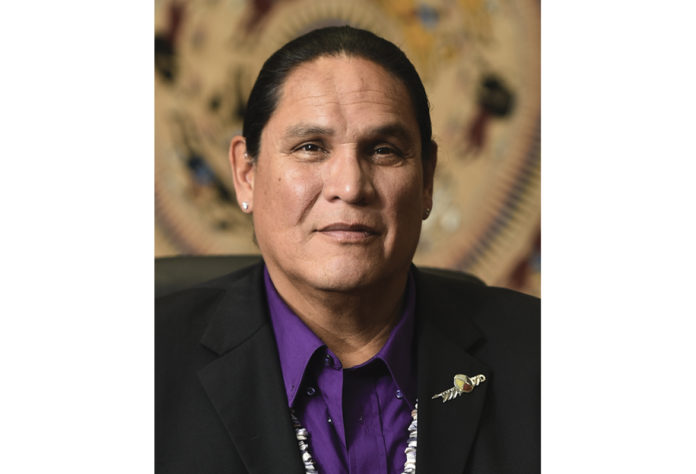By Ernest L. Stevens, Jr.
Indian gaming has worked for much of the past half century to rebuild tribal communities, deliver jobs to rural American families, bring entertainment to our regions, and provide an anchor for Native economies to grow. However, certain commercial gaming interests have recently claimed that Indian gaming, including compact agreements with state governments, constitute both “monopolies” and race-based discrimination that violates the Constitution’s equal protection clause. These arguments ignore settled law and seek to disrupt generations of progress in Indian Country. It should be noted that these commercial gaming interests have not challenged state owned casinos such as those in Kansas, or state operated lotteries as monopolies. The sole purpose of the commercial gaming entities challenging the Indian Gaming Regulatory Act (IGRA) and the governmental status of Indian tribes, is to generate revenue to enrich the individual owners and answer to their shareholders.
In contrast, the purpose of Indian gaming – from its very inception – is to benefit entire communities. The seeds of Indian gaming were planted more than a decade prior to the enactment of IGRA, starting with President Nixon’s June 8, 1970 proclamation that federal Indian affairs policy would support Indian self-determination and put to rest the destructive policy of termination that sought to eliminate the constitutional status of Indian tribes as governments.
Tribal leaders embraced the new self-determination policy. Frustrated and tired of waiting on the federal government to meet its treaty obligations, tribal leaders took matters into their own hands to rebuild Indian communities by opening the first modern-day Indian gaming operations. The early days of Indian gaming were modest. However, from the very beginning, one hundred percent of the revenues generated from these tribal government-owned operations were dedicated to tribal government programs and services to improve health care, education, and economic opportunities in Indian Country.
The threats to Indian gaming we face today are not new. They represent a sad repeat of the early challenges lodged by state governments and commercial gaming corporations to the early years of Indian gaming and self-determination taken by tribal leaders in the 1970s.
In 1987, after almost a decade of legal battles, these challenges culminated in the historic Supreme Court decision in California v. Cabazon Band of Mission Indians, which upheld the inherent sovereign right of Indian tribes to use gaming as a means of generating revenue for their communities. After Cabazon, state governments and commercial gaming took their fight to Congress, seeking to overturn the decision. Tribal governments joined the battle to protect tribal sovereignty and the ability to utilize gaming to rebuild our communities. In these early days of Indian gaming, this meant traveling the country on shoestring budgets – often funded with bake sales and charitable contributions – long before there were tribal lobbyists, cell phones, or e-mail, to tell our story.
The result, a short eighteen months after Cabazon, was the Indian Gaming Regulatory Act, which Congress enacted thirty-five years ago this month. The Act is grounded in respect for tribal sovereignty and the status of Indian tribes as separate governments. IGRA’s primary purpose is “promoting tribal economic development, tribal self-sufficiency, and strong tribal governments.” While the Act is not perfect, the result has been an extraordinary success for Indian Country and rural America. Indian gaming today remains the most successful economic development tool employed by tribal governments, providing them a consistent source of revenue that tribes have used to rebuild their communities.
Tribes use gaming revenues to build homes and improve health care, education, public safety, and social programs for Native youth and elders. Gaming revenues help rebuild a wide range of infrastructure, including roads, water and wastewater systems, communications systems, and much more. Indian gaming is first and foremost about jobs, delivering over 700,000 direct and indirect American jobs in 2022 alone. Jobs generated by Indian gaming provide many Native Americans with their first opportunity to work at home on Indian lands.
Indian gaming is reversing decades of “brain drain” in our communities. Previously, we were losing our best and brightest who lacked the opportunity to thrive at home in Indian Country. Today, Native citizens are returning to Indian lands, drawn by increased employment, education, and housing opportunities that have resulted from resources provided by Indian gaming. Because of Indian gaming, Indian lands are again becoming livable homelands, as promised in hundreds of treaties.
Throughout Indian Country, Indian gaming has enabled tribal governments to make significant investments in education. Those investments are paying off throughout Native communities. Thirty years ago, where we relied on others to serve as our teachers, doctors, lawyers, and other professionals – today, we are educating our young leaders to serve in these positions, and they are returning to serve their
communities.
Indian gaming is also helping preserve and foster Native culture. Past federal policies of forced assimilation and relocation sought to suppress Native language, culture, and religion. Today, Indian gaming is working to honor the sacrifices of our ancestors to hold on to our ways of life by promoting and elevating Native language, culture and identity.
The benefits of Indian gaming do not stop at the reservation border. Tribal governments are the leading job generator in many of their rural regions. Nearly three in four direct jobs created by Indian gaming go to our non-Native neighbors. Rural counties near Indian gaming operations see increases in the employment-to-population ratio and decreases in mortality rates.
Indian gaming is also delivering billions to federal, state, and local governments. In 2022, Indian gaming was responsible for generating $11.5 billion in federal taxes, $4.6 billion in state taxes, and $1.4 billion in county taxes – a total of $17.5 billion. Over the past decade, Indian gaming delivered more than $140 billion to the federal and state governments in the form of employment, income, sales, and other indirect taxes, and reduced general welfare payments. Of this total, tribes shared more than $15 billion to state governments through revenue-sharing agreements codified in tribal-state gaming compacts.
Finally, Indian gaming provides a lifeline for Native communities in the face of recent chaos in Congress. For many tribal governments, Indian gaming revenues constitute the only source of non-federal revenue that is being used to provide the most basic and essential services to our people. The last disastrous government shutdown of 2018-19 cost American taxpayers more than $11 billion. The damage and lasting impacts on tribal government economies was many times worse. Indian gaming revenues helped keep the lights on in Indian Country.
Without a doubt, Indian gaming has transformed Native communities and continues to bring significant benefits to our neighboring rural communities. The recent misguided legal challenges brought by a handful of commercial gaming interests to Indian gaming are not new. Neither is our resolve. We will bring every available resource to the table to fiercely protect tribal sovereignty and our continued inherent right to provide for Native communities.
Ernest L. Stevens, Jr. is Chairman of the Indian Gaming Association. He can be reached by calling (202) 546-7711 or visit www.indiangaming.org.















































